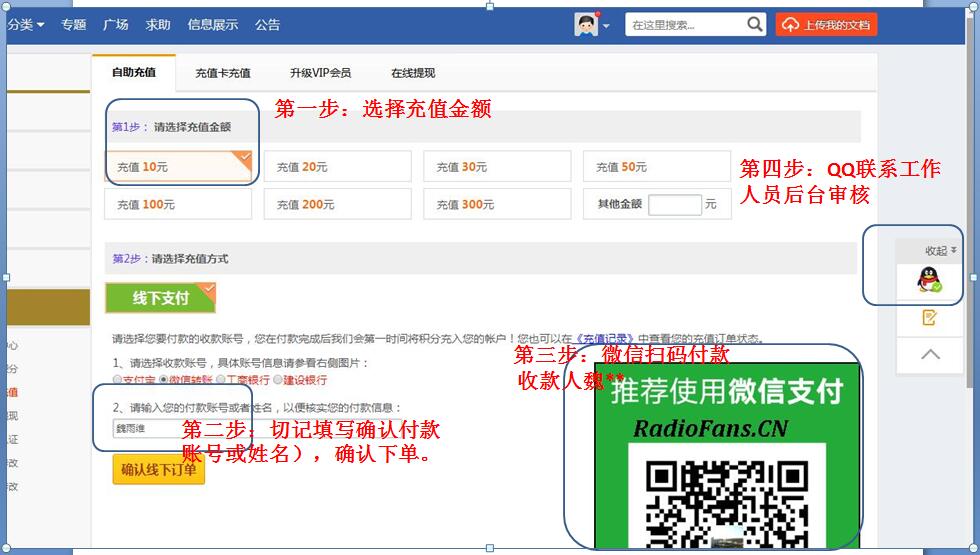 Arcam-A75-int-sm维修电路原理图.pdf
Arcam-A75-int-sm维修电路原理图.pdf
《Arcam-A75-int-sm维修电路原理图.pdf》由会员分享,可在线阅读,更多相关《Arcam-A75-int-sm维修电路原理图.pdf(42页珍藏版)》请在收音机爱好者资料库上搜索。
1、A65/75DiVA A65, A75 & P75 PlusAmplifi ers Service Manual ARCAMARCAMIssue 1.0RadioFans.CN 收音机爱 好者资料库 Contents List ! Contents list ! Circuit description ! Service guide ! Circuit diagrams ! Component overlays ! Circuit board parts list ! General assembly parts list RadioFans.CN 收音机爱 好者资料库A65/75/75P P
2、lus Circuit Description PSU In order get the output devices to turn fully on and achieve the greatest efficiency, an auxiliary rail is formed from a charge pump driven by the main AC outputs from the transformer. C304,305 & D301,302 charge on alternate cycles. In the other cycle the charge on C304,3
3、05 is pumped into C310,311 respectively. This creates a voltage much greater than the standard rails, but with low regulation and high ripple. This is then regulated to 38V via emitter followers Q300,302,303,305 from a zener stabilized voltage (D304,305) The Pre-amp 15V supply comes from linear regu
4、lators Z300,301. The transformer is a dual voltage unit, the required voltage being selected by which fuse holder is fitted with the appropriate fuse. If an alternative to 115V or 230V is required then a different transformer is fitted. The secondary is centre tapped for the main rails, but a separa
5、te winding is added for the uC supply. The star ground point SP300 is not a component on the PCB and is on the schematic only for layout purposes. Pre-amp The direct signal path (line in, tone controls defeated) consists of a single op-amp gain stage, buffering the j-fet input multiplexers and Tape
6、Monitor and AV switches. The selected input is AC coupled to the op-amp, the output is DC to the Pre-out, via a j-fet pre-mute switch. This switch is controlled by the uC in such a way that when ever the output relay changes state signal is removed from the power amplifier (A65/75). The MM phono sta
7、ge (by passable A75 only, SW100) is opamp based. The circuit is AC coupled to give RIAA/IEC low frequency response. The cartridge is loaded by R100,101,C119,120. The 1kHz gain is 56dB, and RIAA eq set by R110,112,111,113,C127,129,128,130. Each line input has static protection afforded by the back to
8、 back diodes (e.g. D101,103), and RF filtering is set by R118,C134 etc. The selected input is buffered for Tape output by Z104 set as a follower. The output resistor is inside the feedback loop so to keep the output impedance low and short protection is catered for. C121,122 maintain stability into
9、capacitive loads. From the tape monitor switch (Z105) onwards the signal is AC coupled (C151,152). From there the signal is fed to the tone controls. These consist of two stages: Balance and buffer (Z160), and Bass/Treble Z161. The output of this stage is again AC coupled. Switch SW162 selects wheth
10、er the tone adjusted signal or a direct signal reaches the gain section. In the A75 Z164 can be used to bypass the volume control when AV input is selected. This fixes the gain to allow an external AV processor to control the volume setting. The gain stage (Z163) has a gain of 2.2, and the same low
11、impedance output arrangement as the Tape output. The signal from this stage to the Pre- amp outputs and the Power amp input is controlled by a pre-mute (Z171). This removes thumps and clicks, and in the case of the Power amp relay changing state, removes signal so arcing will not take place. Power A
12、mplifier The new topology is a high gain voltage feedback design, with a bipolar output stage. Its signal path is designed to be fully symmetrical, despite not having a symmetrical circuit (symmetrical rail to rail). This is achieved with a new dual differential input gain block, where the input dif
13、ferential sees a symmetrical active load (Q600,601,700,701) before driving the second voltage amplification stage (VAS) differential (Q603,604,703,704). This could be described as two Wilson mirrors with their bases clamped together. The second differential also has an active load of a more traditio
14、nal mirror (Q610,611,710,711), and this gives a push pull signal to the input of the output stage, improving on the traditional single ended current source of the often called blameless topology. The input pair (Q606,607,618,619,706,707,718,719) are in a Darlington configuration to lower input curre
15、nt offset which in turn will lower DC offset at the output, as the impedances seen on the input nodes are necessarily high for the wide bandwidth required. The output stage is a simple bipolar darlington (Q614,615,714,715). However, the devices used are Darlington devices with integral diodes. This
16、means the bias temperature compensation is part of the output device enabling smaller number of devices, no extra devices on the heatsink (vital for this mechanical layout) and more consistent temperature compensation of bias. Also the resistors are also integral, saving a large amount of PCB real e
17、state and hand insertion cost, while also able to be used as bias set test points and protection sensing.Due to the decreased efficiency of this type of output stage over the previous bootstrapped Mosfet output, a separate set of rails is required for the VAS stage in order to saturate the output tr
18、ansistors. The operation of this is outlined in the Power supply section. However, these rails are individually regulated for each channel to decrease power supply crosstalk. The protection of the output stage is taken care of by a proprietary IC (Z101). This takes care of the switch on delay (R150,
19、C149), DC offset (R102,103,C147), Thermal trip (TH100), and safe operating area. The safe operating area is monitored by a network which compensates for the voltage across the output devices, current through them, and duration of power (R627,606,625,605,C617 & symmetrical associated components) and
20、this is sent to the protection IC via (Q605,612,613,616,617,712,713,716,717). The output of the protection IC is sent to the micro controller (uC) to signal the output relay (RLY1) status. Also, for output muting purposes, the uC can switch the relay via Q100. Input Selection The uC controls the ope
21、ration of the unit. IR commands are received from RX900 on a break-off PCB found on the front panel and fed via LK900/LK903 3-way ribbon. On power on/off the current state of the pre-amp switching stored in an EEPROM Z906. The input switching is 5V logic level and is direct from the uC to the DPDT a
22、nalogue switches in the case of Tape Monitor (Z105), AV (Z164,A75 only), Pre-mute (Z171) and Mute Q100. The source selector is achieved by 8 way analogue multiplexors (Z102,103) and the control signals are decoded from the uC from MUX1,2,3 by Z907 which also drives the appropriate front panel LED. T
23、he input selection is set by the remote control or the rotary encoder on the front panel display PCB. Tape monitor and AV mode(A75 only) is set by SW900. Volume Control The volume control is a motorized manual type, where the signals are routed through the 8-way ribbon LK189. The motor drive comes f
24、rom Z905, which is a logic level controllable motor driver. It has its own unregulated PSU (D907,C920),and the speed of the volume knob is dictated by the REF pin. The circuit (Q900,R905,901,C901) allows the speed to vary from just above stall to full as the volume control button is depressed on the
25、 remote. SIM Module The connector PL161 (P75 only) allows the fitting of the ARCAM SIM module. In order to allow this to operate LK172 & LK173 must be removed. This will allow 12V trigger signals to operate the P75. Headphones The Speaker outputs (SK600,700) are connected to the headphone socket (SK
- 配套讲稿:
如PPT文件的首页显示word图标,表示该PPT已包含配套word讲稿。双击word图标可打开word文档。
- 特殊限制:
部分文档作品中含有的国旗、国徽等图片,仅作为作品整体效果示例展示,禁止商用。设计者仅对作品中独创性部分享有著作权。
- 关 键 词:
- Arcam A75 int sm 维修 电路 原理图
 收音机爱好者资料库所有资源均是用户自行上传分享,仅供网友学习交流,未经上传用户书面授权,请勿作他用。
收音机爱好者资料库所有资源均是用户自行上传分享,仅供网友学习交流,未经上传用户书面授权,请勿作他用。



 Marshall-9100-62-02-Schematic电路原理图.pdf
Marshall-9100-62-02-Schematic电路原理图.pdf


